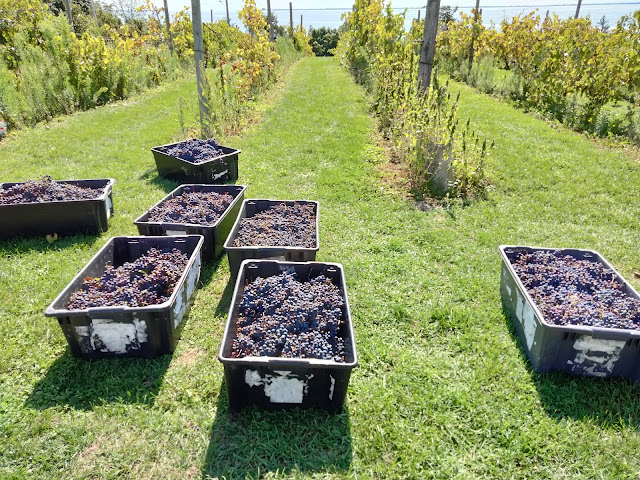This is another of my sewing tutorials for Isabel.
1. Gather your materials. You will need:
your pattern, with darts marked, your cut fabric, tailor's chalk or a water soluble pencil to do the marking, pins, and a ruler. I prefer chalk since it is so easy to use and remove. See the purple gizmo? That's my Dritz chalk sharpener. Such a useful little piece of plastic!
2. Working on each side of the bodice separately and with the WRONG side facing, lay the pattern piece over the fabric piece, carefully lining everything up.
Anchor the pattern piece down in the areas above and below the dart. Here I am using a knitting magazine and some coasters. You don't need fancy pattern weights. I like having my self-healing mat underneath because it keeps the fabric from sliding around.
3. Gently lift the outer edges of the pattern over the dart and mark where the top and bottom of the dart meet the fabric edge.
Make just small marks for now. IMPORTANT: Some darts have the centre fold line marked. You can ignore that; it's superfluous, and the fewer marks on your fabric the better.
4. Using a pin, poke a hole through both pattern piece and fabric at the apex of the dart.
Wiggle the pin around enough to make a visible (but not damaging!) hole in the fabric.
5. Lift up the pattern piece and the pin and find the tiny hole. Mark a cross over it. The vertical line of the cross will be helpful later on during the sewing, so extend it a bit.
5. Take your ruler and use it to mark straight lines joining the centre of the cross to the markings at the edge of the fabric.
Make the markings heavy enough that they won't rub away while you pin the dart together in the next step.
6. Now pin the outer lines of the dart together like this. You will need the fold to be to your right when you sew, so make sure the pins will be on the side of the fabric facing you when the fold is to your right. If you find your markings are fading, touch them up before you hit the machine.
7. Time to sew. Begin by backstitching at the outer edge of the fabric and use a regular stitch length until your get to about 1/2" before the apex.
8. At that point, switch your stitch length down almost as short as it will go.
9. Complete the dart, hand turning the needle for the last 1/4" as you taper into the apex, finishing up with just one or two threads at the very point. Cut the thread LEAVING 6" TAILS.
10. Now to the ironing board. Grab a sleeve ham if you have one. (If not, a balled washcloth can work in a pinch.) Remove all markings before you proceed. Chalk rubs away easily with a dry washcloth. If you used water soluble pencil, then rub it off with a damp washcloth. Begin by setting the stitches. Simply lay the iron on the folded seam, staying away from the point of the dart. KEEP THE IRON AWAY FROM THE APEX UNTIL LATER, AS INSTRUCTED.
11. Open up the dart and finger press it with the fold pointing DOWN toward the waist. Finger pressing will really help your finished dart to melt invisibly into the fabric. Continue to stay away from the apex.
12. Apply steam to the right side of the dart, still staying away from the apex.
13. Now lay the dart over the curved end of the sleeve ham and finger press the apex open until it is quite flat. Finally, apply steam to it. It should look like this, with no puckers.
14. Turn the dart to the wrong side and tie the thread ends in a square knot (right over left, left over right, or vice versa). Clip the thread ends to about 1/2" in length.
Done!


















































